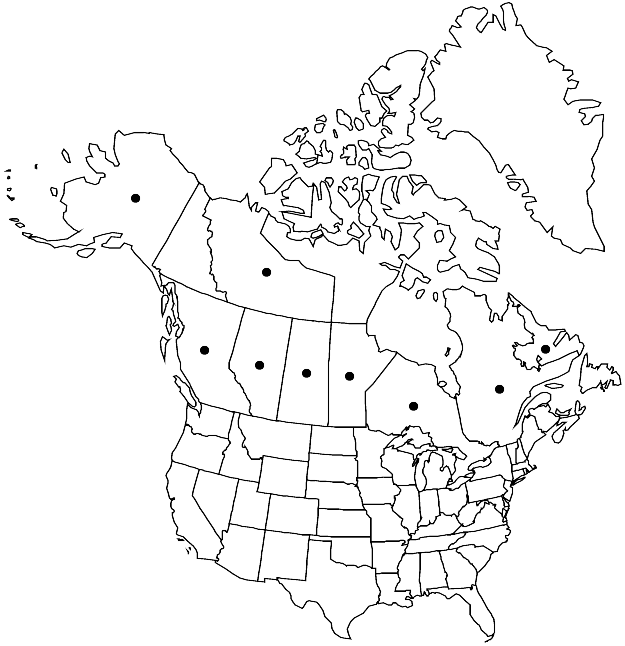Splachnum luteum
Sp. Musc. Frond., 56. 1801.
Plants light green or yellow-green. Stems 1.5–3.5 cm. Leaves somewhat crowded at stem apices, oblong-obovate, 5–6 mm; margins bluntly serrate to subentire distally, indistinctly bordered; apex slender-acuminate; costa disappearing in acumen somewhat before apex. Seta greenish yellow to orange-red, 2–15.5 cm, slightly twisted. Capsule urn orangebrown, 1–1.5 mm; hypophysis bright-yellow, discoid-umbrelliform, much wider than urn, smooth; operculum hemispheric, blunt; exostome teeth inserted below mouth, approximate in pairs, orangebrown. Spores subspheric, 7–9 µm, yellow-green.
Phenology: Capsules mature spring–summer.
Habitat: Dung of large boreal herbivores (such as moose), muskeg, boggy habitats
Elevation: low to high elevations
Distribution

Alta., B.C., Man., Nfld. and Labr. (Labr.), N.W.T., Ont., Que., Sask., Alaska, n Europe, Asia
Discussion
The bright yellow hypophysis on long seta of Splachnum luteum gives this moss the appearance of a flower. The hypophysis is discoid-umbrelliform, unlike the more convex-umbrelliform hypophysis of S. rubrum, and 4.5–11 mm wide. Immature sporophytes look much like the mature sporophytes of S. sphaericum or immature sporophytes of other North American species of Splachnum. The oblong-obovate leaves with bluntly serrate margins that narrow abruptly to a slender acumen, however, help distinguish S. luteum. Splachnum luteum is generally rare although locally common in central Alaska; the plants are often found growing on the same patches of dung with S. sphaericum and sometimes S. rubrum.
Selected References
None.
